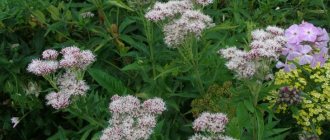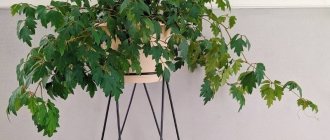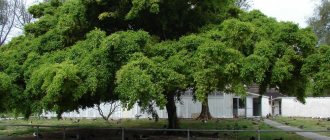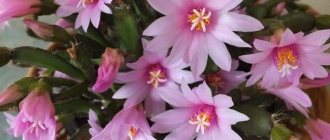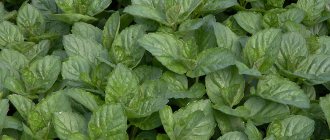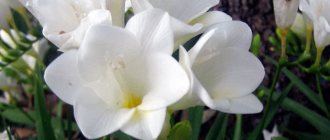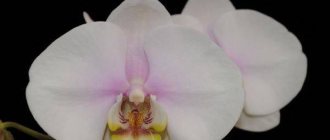Thorny plants are of particular interest to gardeners. There are many varieties of them. Photos of thorny plants demonstrate that some of them have a very exotic appearance and become a decoration of a garden plot or flower bed. Such plants enhance the decorative effect. They are indispensable in design compositions, making them especially stylish. Home gardeners are also very fond of such unusual specimens. The name of thorny plants, as well as a description of their types, will give an idea of the unsafe, but very common inhabitants of flower beds and window sills.
Eringium
Eryngium is another name for it. These plants have a spiny flower. Currently, eryngium is very popular and is a decoration of the garden. Its blue and light blue spiky inflorescences are very showy. The most common species were flat-leaved eryngium and alpine. They are widely used in garden landscape design. The height of these specimens reaches from 70 cm to 1 meter. Alpine eryngium, compared to flat-leaved eryngium, has larger inflorescences.
In modern landscape design, plain eryngium, the so-called tumbleweed, is also used. This is a very prickly but spectacular plant. Eryngium grows well in rocky and dry soil.
Holly holly
This is the British favorite Christmas shrub. Holly holly hedge. Photo from davisla.wordpress.com. Branch with fruits; photo by the author Common holly (Ilex aquifolium): bush-like forms with a height of 1 to 2.5 m are more often used. Its dark green, hard, elliptical, prickly-toothed leaves are beautiful, which act as a shield.
It is effective during fruiting, when it is decorated with bright red rounded drupes (and this period lasts more than six months, since the fruits ripen in July-August and remain on the branches until the spring of next year). It grows slowly, is durable, and thermophilic (can tolerate temperature drops to -18...-20 °C for a short time). On the South Coast and ChPKk, holly hedges can be laid without risk. Pruning comes down to shortening vigorous shoots. It responds well to fertilizing with complete mineral fertilizer at the beginning of shoot growth. Propagated by green cuttings, layering, stratified (4 months) seeds.
Thistle
These are annual spiny weeds. There are more than a hundred types of them. Among them is milk thistle. It belongs to one of the species grown by people. Its height is 1.5-2 meters. Its spines are long and sharp. The stem is erect, strongly branched in the upper part. Flowers are collected in prickly baskets. It does not lose its decorative effect throughout the season, delighting with flowering until late autumn. Milk thistle is a light-loving and drought-resistant crop that can survive without watering for a long time. She is not afraid of temporary cold, diseases and pests. Usually milk thistle is planted at a distance of at least 1.5-2 meters from paths and other plants.
In addition to its bright decorative properties, this plant has healing properties: diuretic, antidepressant, anticonvulsant. Its shoots with foliage are widely used to treat various diseases, including diseases of the liver, thyroid gland, radiculitis, hemorrhoids, psoriasis and many others. This amazing plant is also used in cooking in the form of flour and butter.
Houseplants with thorns
Flower growers are very fond of thorny crops, as they do not need constant attention. Plants tolerate long periods without watering well and are rarely attacked by insects and pathogens.
Spurge
Botany knows more than one and a half thousand varieties of euphorbia. The Molochai family is represented by shrubs, subshrubs, trees and cactus-like crops. All of them are united by one feature - the above-ground part of the plant has a poisonous milky sap, which can cause burns or serious poisoning. The following subspecies of milkweed are most suitable for indoor growing:
- Cereus-shaped. Externally, the flower looks like a cactus and is a branched bush formed by large cylindrical trunks up to 2 m long. The multifaceted shoots are covered with long thorns, but there are practically no leaves on them.
- Trihedral. A branched perennial 2-3 m high, distinguished by fleshy stems with three edges. The aboveground part of the plant is covered with small spines, and the tops of the shoots are crowned with ovoid small leaves.
- Belozhilkovy. It is not for nothing that the palm-like flower is compared to a tropical tree. Oval-elongated shoots with pronounced light venation are collected at the top of a pentagonal spiky shoot and form a lush emerald cap.
Cereus spurge
Triangular spurge
White-leaved spurge
Video “Varieties of indoor cacti”
This video presents cacti common in indoor floriculture.
cacti
No less popular thorny crops are representatives of the Cactus family. Due to their ability to grow in the most spartan conditions, flower growers nicknamed this group of plants “flowers for the lazy.”
Echinopsis
A small spherical cactus, which over time acquires a more elongated, columnar shape. The fleshy, dark emerald-colored stem has several edges covered with short, sharp needles. During flowering, the perennial shoots out a scaly arrow about 30 cm long. On it is a large funnel-shaped single bud of white or soft lilac color.
Echinopsis blooms, like many other types of cacti, for only 2-3 days.
Astrophytum
Under this name, several representatives of the genus are collected, which are united by a multifaceted spherical shape:
- Capricorn. It grows no more than 25 cm and has 7-8 ribs covered with long spines. The color of the stem is light green, complemented by small silver specks. The flowers are lemon yellow, scarlet at the base.
- Star-shaped. It is distinguished by a hexagonal shape and the absence of spikes. Instead, felt spots are placed on the surface. The inflorescences are creamy white with an orange-red center.
- Mottled. It is also devoid of sharp needles, instead it is covered with soft specks. They give the perennial an unusual velvety texture. Astrophytum blooms in small bright yellow baskets.
Mammillaria
The largest genus of Cactiaceae, numbering about 200 species. Most often these are low-growing plants, densely covered with bristly hair and without edges. Instead, the entire surface is covered with small papillae from which spines grow. Among the most famous mammillaria are:
- Hana. A spherical cactus no more than 10 cm high. Due to its dense fleecy coating, it has a silvery tint. The inflorescences are bright crimson, about 20 mm in diameter, collected in a circle at the top.
- Wilda. A highly branched variety, distinguished by columnar cylindrical stems 5 cm in size. The needles are small and golden. Blooms in creamy white miniature baskets.
- Zelman. A small cylindrical cactus, densely covered with curved dark burgundy spines. During flowering, which occurs in spring, it produces small white and pink buds.
Teasel
This biennial plant is a stem, the height of which reaches 0.8-2 meters, with a rosette of oblong leaves. At the top and side branches, prickly cones are formed, covered with white and lilac buds.
The plant looks impressive in the garden. It should be planted in the background of a flower bed, against the background of conifers or shrubs, as well as near a wooden fence. It easily endures winter even without shelter. The cones, when ripe, do not crumble and retain their shape. The stems do not bend from wind and rain. It is no coincidence that teasel is the favorite material of florists. It is used both as an independent plant in a bouquet and as part of stylish decorative compositions.
Medicinal properties and uses
Speaking about the pharmacological properties of donkey thorn, one cannot fail to mention some of the abilities of the tartar plant associated with their effect on the human body.
In the medical industry
Tatarnik has a tonic effect and is able to activate the heart muscle. Due to the active components, heart contractions increase and peripheral vessels narrow. Thus, blood pressure increases and the effect on the smooth muscles of the heart increases.
Experts in the field of medicine note the hemostatic, anticonvulsant and bactericidal effects that were noted when using a medicinal plant for human health.
Tatarnik in concentrated form and in large dosages can have a depressing effect on the nervous system, and in small doses, activate it
It is worth highlighting a few more healing qualities belonging to this amazing plant crop. The prickly tartar is capable of having a bactericidal and diuretic effect. It is used for stomach upsets as it has an astringent property.
Remedies with the prickly plant are used for colds, since its anti-inflammatory properties have been known in witchcraft for a long time.
Here are some convincing examples of the use of thistle in alternative medicine and homeopathy:
- During convulsive phenomena, pulmonary hemorrhages, and liver pathologies, a decoction of tartar fruits is used. During severe diarrhea and digestive disorders, drink a decoction based on the roots of the tartar. Doctors recommend using the juice obtained from thorn roots for diseases such as paresis and paralysis.
- A tincture of tartar roots helps relieve severe cough and shortness of breath during bronchitis. It will also be appropriate for colitis, respiratory diseases and ailments of the stomach and intestines.
- Tea from the roots of this plant strengthens the body's immune properties and restores the natural defense mechanism.
- Traditional healers claim that soothing infusions and teas of their tartar plant will help with psychosis and any disorders of the mental system.
- For patients with ailments such as gynecological bleeding, as well as oncology in the genital system and uterus, it is recommended to use a decoction or tincture of Tartaria prickly.
- People suffering from gout, rheumatism, and kidney diseases are also prescribed medicines based on the prickly plant.
- As a lotion, chertogon is recommended for eczema, purulent wounds, lupus erythematosus, scrofulosis and many other skin ailments.
- Information about the effective use of the plant for tetanus, itching and scabies is confirmed.
For cosmetic purposes, the “green doctor” is excellent for getting rid of cellulite and cleansing the skin. In this area, a strong infusion is used, added to the bath.
This plant is not used in cooking, as it is bitter and has toxic substances, albeit to a small extent. It is also of no interest to beekeepers, for the same reason - the presence of bitter components in the inflorescences.
Mordovnik
This is a perennial plant from the Asteraceae family. The round head of its inflorescence looks like a club. The stem of Echinops is single, erect. The leaves are pinnately serrated or entire with serrations, depending on the species. It blooms in its second year from May to August. Blue flowers are collected in spiny inflorescences, which have a spherical shape.
This is an unpretentious plant, resistant to diseases. Doesn't like a lot of moisture. Mordovnik is used to decorate flower beds, as its blue color harmonizes with the warm, bright tones of other plants.
Contraindications
In order for the treatment to be beneficial, it is necessary to take into account not only the medicinal and beneficial properties, but also the contraindications of the prickly tartar that it has. Plant preparations are non-toxic and do not accumulate in the body with long-term use. There are no side effects.
The prickly tartar can cause harm only in cases of hypertension, since they tend to increase blood pressure. Therefore, people suffering from this disease should consult a doctor before starting treatment.
cacti
These are thorny plants of different sizes. Basically, cacti are inhabitants of deserts and semi-deserts, where the level of humidity is very low. But some species also grow in the tropics. Cacti easily adapt to sudden temperature changes. They live on sandy and gravelly soils. The spines of these plants grow instead of leaves; their maximum length can be up to 25 cm. This helps cacti prevent moisture loss.
Currently, various types of these exotic plants are very widely used in landscape design.
Features of home cacti
These prickly plants are unusually tenacious, as they can survive for a long time without watering or fertilizing. In winter, you don’t have to water them at all. But cacti definitely need sunlight. There are many types of them. Domestic flowering cacti become covered with buds, as a rule, annually, but when they reach 3-4 years of age. This happens in the spring. But some species can delight with flowers at other times of the year.
For a cactus to bloom, it is necessary to create conditions close to natural. First of all, this concerns lighting and humidification. In autumn you need to water less often. In winter, it is advisable to avoid watering altogether. And start spraying with water only in March, resuming irrigation. In winter, the lighting should be dim and the room where the cacti are kept should be cool. If the buds have already appeared, this prickly houseplant should not be replanted or fertilized.
Dosage forms
When preparing any preparations with prickly tartar, you should carefully ensure that the plant’s spines do not get into the finished medicine.
Leaf decoction
20 gr. pour 250 ml of crushed leaves (can be together with flowers). water. Bring to a boil and simmer over low heat for 20 minutes. Remove from heat, cover with a lid, insulate and leave until warm. Strain, squeeze out the raw materials. Bring the resulting decoction to its original volume using boiled water.
Take 1 tbsp. 3-4 times a day half an hour before meals.
Infusion of flowers
1 tbsp. pour 250 ml of raw materials. boiling water Cover with a lid, wrap and leave until warm. Strain, squeeze out the raw materials.
Take 1/4 tbsp. three times a day half an hour before meals.
Also used externally.
Tincture
Fill a little more than half of the glass jar tightly with the flowers of the prickly tartar and top up with high-quality vodka. Mix. Close the container tightly with a lid and leave in a dark place at room temperature for a month, remembering to shake periodically. Strain, squeeze out the raw materials.
Take 20-30 drops diluted in half a glass of water three times a day after meals.
Juice
Rinse young leaves well under cold running water and grind using a meat grinder or blender. Squeeze the juice out of the resulting mass using gauze folded in several layers.
Take 1 tsp. three times a day before meals, washed down with water.
Also used externally.
Powder
Grind the dried leaves of the prickly tartar to a powder. It is very important to ensure that no thorns get into the powder.
Take 1 tsp. 3-4 times a day, washed down with water.
Araucaria
This is a coniferous evergreen plant, its bark is flaky. It grows very slowly. Its branches are located horizontally, the crown is pyramidal. The leaves are subulate, light green in color, up to two centimeters long. Gives the design of the room an elegant chic. Araucaria is unpretentious in care. Loves good lighting, but is afraid of direct sunlight. In the warm season, it requires abundant watering, and in winter, moisture must be reduced. Loves daily spraying.
Zanthoxylum flat needles
A specific shrub with large thorns that appear throughout its life, and the peculiar tart smell of Rutaceae. It is perfect for creating impenetrable fences on the South Coast and ChPK. The thorniness of the shoots is enhanced by thin spines (which is especially noticeable in young specimens) located along the veins of the underside of the leaves. Zanthoxylium flat needles, general appearance and fruits; photo by the author Zanthoxylum planispinum is native to the Himalayas, China.
Despite the fact that this is an evergreen shrub whose old leaves periodically fall off, in the south-coast winter its leaf blades curl into tubes and hang. The greenish flowers are inconspicuous, but the red capsule fruits are unusually impressive. The latter, when ripe, burst, releasing black shiny seeds with the same strong odor as the plant itself. Propagated by seeds, self-sowing. Undemanding to growing conditions.
Cryptomeria
Its other name is Japanese cedar. This is an evergreen plant of the Cypress family. Its crown is dense, the color varies from light to dark shades of green. Japanese cedar is quite common in landscape design and park landscaping. At home, dwarf forms are used. They are grown in winter gardens, on balconies or terraces. These plants are photophilous, but do not tolerate direct sunlight. The best place for it is outdoors. Watering requires special attention. The water should be warm, settled or boiled. Loves being sprayed.
Pandanus
This screw palm is widely used by home gardeners. It is a plant with prickly leaves and a lush crown.
The leaves are narrow and oblong, with spines at the ends. They grow in a spiral. This is a very impressive plant. In nature it grows in the tropics. As a home dweller, pandanus is very unpretentious. It is usually recommended for beginning gardeners. It quickly grows to a large size, becoming similar to a real palm tree. But if there are small children or pets in the house, it is better to avoid this plant.



